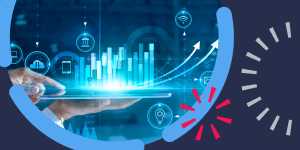Despite the widespread implementation of SAP systems, their users can still face a number of challenges. SAP products generally refer to ERP systems, and some of the problems that can be faced there are quite common. So if you understand their specifics, it will be easier for you to prepare for potential difficulties. Today we will look at 10 main problems that companies integrating SAP can face.
Project management itself can be challenging for some companies. If an organization decides to implement enterprise resource planning software into its work, it needs to prepare for the fact that the process will take place in several stages. Plan, design, develop, migrate, test, deploy, maintain, and provide post-launch upgrades – each of these steps must be controlled. Every stage may have its own difficulties, so the processes must be constantly monitored – therefore, when implementing a SAP system, a company must understand that new software is not a panacea itself.
Realistic planning is not always possible to be organized before the integration itself, and this can also become a problem. For example, during the implementation of the new software, the company may find that it starts to go beyond the budget. Such situation may arise if the budget was not initially planned, including a clear list of functions and features. The same situation can apply to the time spent – if it was originally planned unrealistically or if potential delays were not taken into account.
Changes in the company’s work strategy and changes in business planning are also necessary if the company decides to switch to SAP systems. Despite the fact that the general objectives and plans of the company may remain untouched, minor adjustments to the future business strategy may still be required, and this should be taken into account in advance. Company managers should also keep in mind that, in addition to employee awareness, innovations should not interfere with the work process of each of them – and will not in the future.
The human factor, or rather the responsibility of everyone involved in the development process at one stage or another, also plays an important role. At different stages of SAP systems integration, different employees can be included in the process. Each of them also has their own personal goals, tasks and priorities in parallel. That is why when planning to use SAP or any other ERP system, you need to make sure that the different sections are sufficiently aware of their personal tasks and responsibilities and are able to communicate quickly and clearly with each other.
Since SAP systems provide centralized data storage for the entire organization, data transfer from previously used databases is necessary. At the same time, workers that are in charge of the data migration need to make sure that they have accurately collected all the available data, which can sometimes be stored separately and in different sources. It is necessary to make sure that the information is collected not only from all available databases, but also that some essential information is not lost in personal documents or archives of employees of different departments. This data must also be properly filtered. For example, among the general amount of documents, there will surely be a lot of outdated, irrelevant or simply duplicate information.
Even if the process of introducing new software went smoothly, post-implementation audit is something that should not be forgotten in the future. Like any other software, SAP systems need regular auditing and updating in order for the system to provide reliable uninterrupted operation at all stages in the future. This applies to both standard updates released by the manufacturer, and updates to all other related software – for example, anti-virus programs. In addition, all employees working with the system must be aware of the need to monitor the safety and proper functioning of the system.
And, of course, security. SAP systems are the ones that store a large amount of critical data, so it is necessary to control their security in the same way as any other aspects of the operation of these systems. It is recommended to follow the information on new vulnerabilities and patch updates published by the manufacturer on the website, as well as conduct regular security audits on your own.











